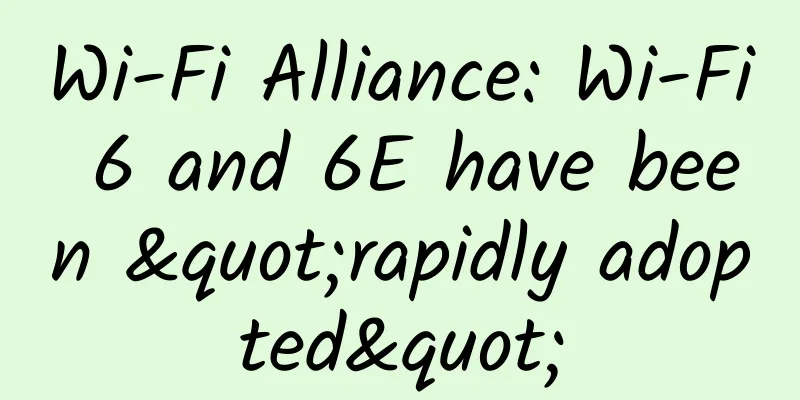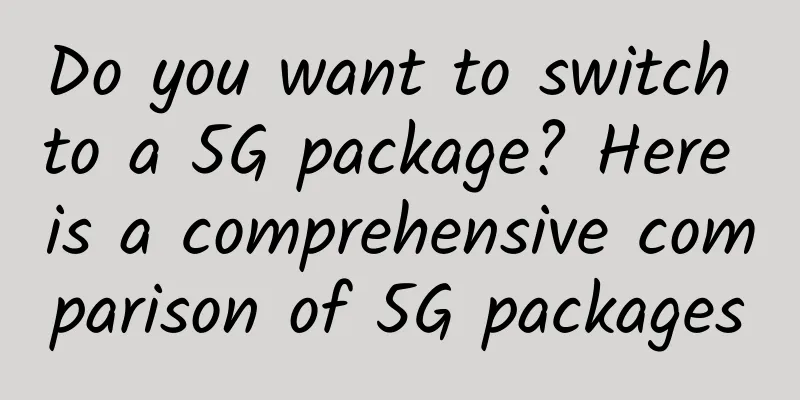Wi-Fi Alliance: Wi-Fi 6 and 6E have been "rapidly adopted"

|
By 2025, Wi-Fi 6 and Wi-Fi 6E are expected to exceed 80% market share. The Wi-Fi Alliance certified the sixth generation of Wi-Fi in 2019, followed by Wi-Fi 6E in 2021. Since then, Wi-Fi 6 has seen "rapid adoption," the alliance said, with Wi-Fi 6 exceeding 50% market share. Three areas are driving the Wi-Fi 6 and 6E market: products, deployment, and regulation. productAccording to data from the Wi-Fi Alliance, more than 2.3 billion Wi-Fi 6 products and 350 million Wi-Fi 6E products are expected to enter the market in 2022, and Wi-Fi 6E will account for more than 15% of all Wi-Fi 6 shipments this year. In a press statement, Edgar Figueroa, president and CEO of the Wi-Fi Alliance, said that more than 400 Wi-Fi 6E devices have been certified, a category that includes more than 70 laptop models, dozens of consumer and enterprise access points, smartphones, and smart TVs. By 2025, Wi-Fi 6 and Wi-Fi 6E are expected to exceed 80% market share, dominating the smartphone market. In addition, Broadcom has shipped more than 1 billion Wi-Fi 6 and Wi-Fi 6 E chips, and Extreme Networks said in an earnings call that Wi-Fi 6E accounts for 10% of its bookings. deployThe benefits of Wi-Fi 6E, which brings the capabilities of Wi-Fi 6 to the 6 GHz band, have been demonstrated in multiple verticals, including healthcare and education. For example, the University of Michigan installed more than 15,000 Aruba AP-635 indoor model Wi-Fi 6E access points across its campus. The project took eight months and cost $11 million and was completed in April this year. “People are downloading at speeds of 300 to 400 megabits per second, which has enabled us to reduce the number of wired ports on campus and reduce the number of switches in all of our cabinets,” commented Ravi Pendse, the university’s vice president of IT and chief information officer. “That’s nearly 80,000 wired ports to remove or reduce. That saves us thousands of switches.” RegulationThe United States was the first country to open the 6 GHz band for Wi-Fi; however, more than 60 countries in the Americas, EMEA, and Asia Pacific have already or are considering doing so. Countries such as Brazil, Canada, Chile, Costa Rica, Guatemala, Honduras, Peru, Saudi Arabia, South Korea, and the United Arab Emirates have already used the upper and lower 6 GHz bands (5925-7125 MHz) for Wi-Fi 6E, while other countries such as Saudi Arabia want to use the entire 1200 MHz spectrum in the 6 GHz band for Wi-Fi, a position that the alliance "appreciates." |
>>: A thorough understanding of container network communication
Recommend
Enterprises generally believe that 5G has great potential but still face cost and security pressures
Early on February 27, a new global study by Accen...
The ranking of countries with the fastest internet speeds in the world has been revealed!
Computers and the Internet are one of the greates...
Xunfang and Huawei join hands to enter the era of big service 2.0, four key words to achieve consistent service experience
[51CTO.com original article] On a weekend in earl...
Blockchain development faces four major "pain points"
Not long ago, the central bank and seven other mi...
5G and AI Use Cases - How 5G Helps Implement Artificial Intelligence
Michael Baxter says 5G will unlock the potential ...
A thread pool that novices can understand at a glance
I believe everyone can feel that using multithrea...
Let’s talk about whether 5G really consumes more power?
[[374504]] This article is reprinted from the WeC...
How much will the operator's 1G traffic fee be reduced to?
Can you bear not going online? Obviously not, bec...
Summary information: CUBECLOUD/zorocloud/Eurasia Cloud/Bluemi Cloud
Recently, we have received product promotion info...
VULTR adds its 30th data center in the world: Osaka, Japan
It has been more than half a year since I last sh...
Xiezhong's progress is remarkable丨2019 H3C Automotive Industry CIO Forum accelerates smart upgrades across the board
After years of sustained rapid growth, my country...
How much is the 700MHz frequency band worth? 7.6 billion!
[[388322]] Today, UK Ofcom announced the results ...
Review of eight hot spots in the optical communication industry in 2021: Highlights frequently emerge under the halo of 5G
In 2021, digitalization has become the focus, and...
How to effectively manage network communication data? Egress traffic monitoring can reduce the burden on the network
Informatization has gradually penetrated into all...
CommScope’s Viewpoint: Operators’ Network Efficiency Transformation in the 5G Era
Despite the impact of the "black swan" ...









